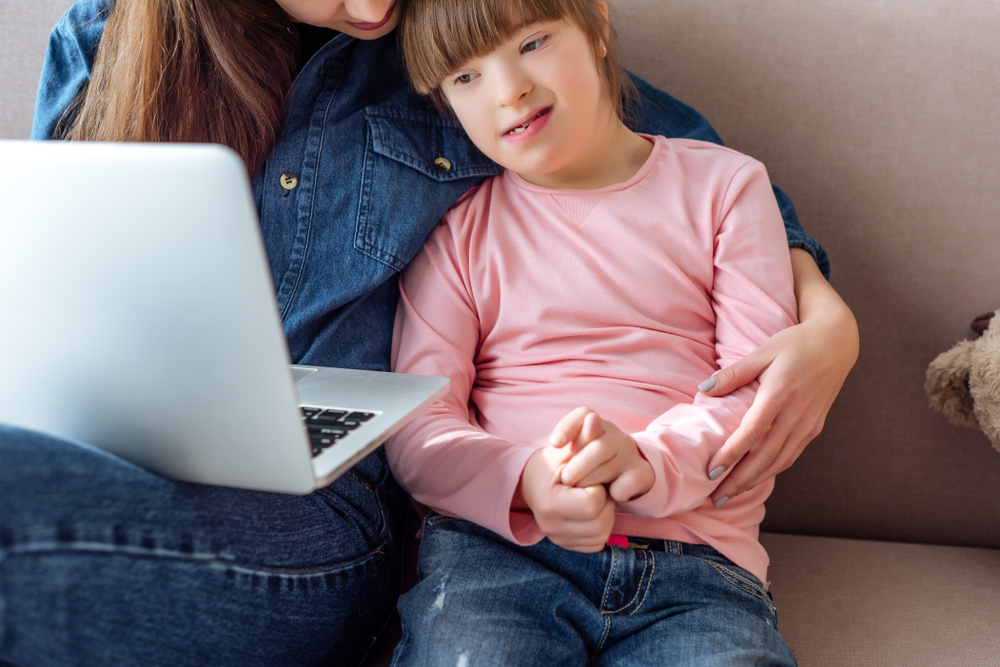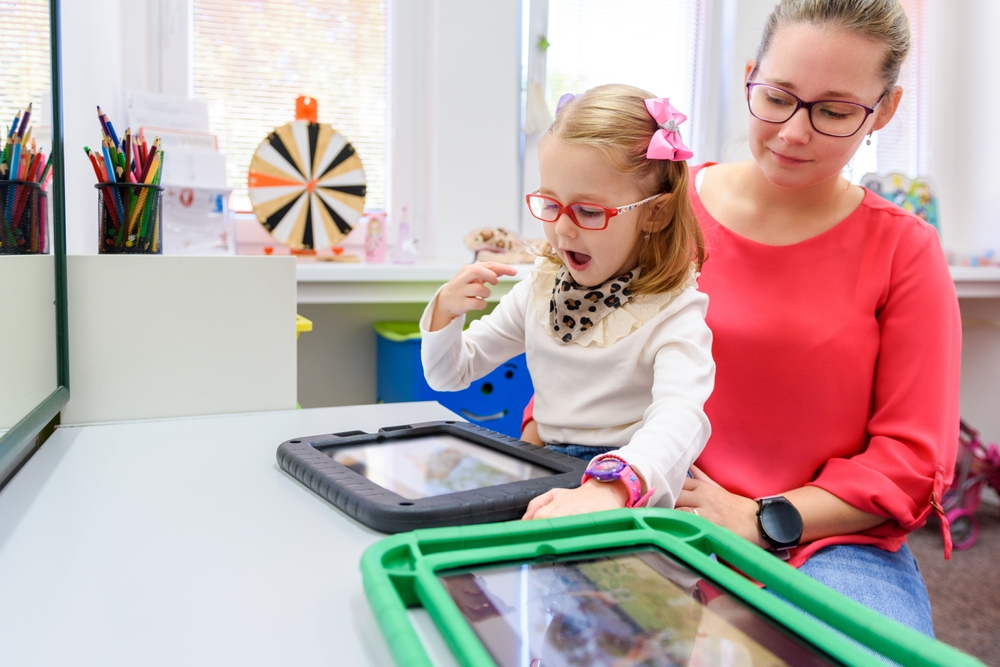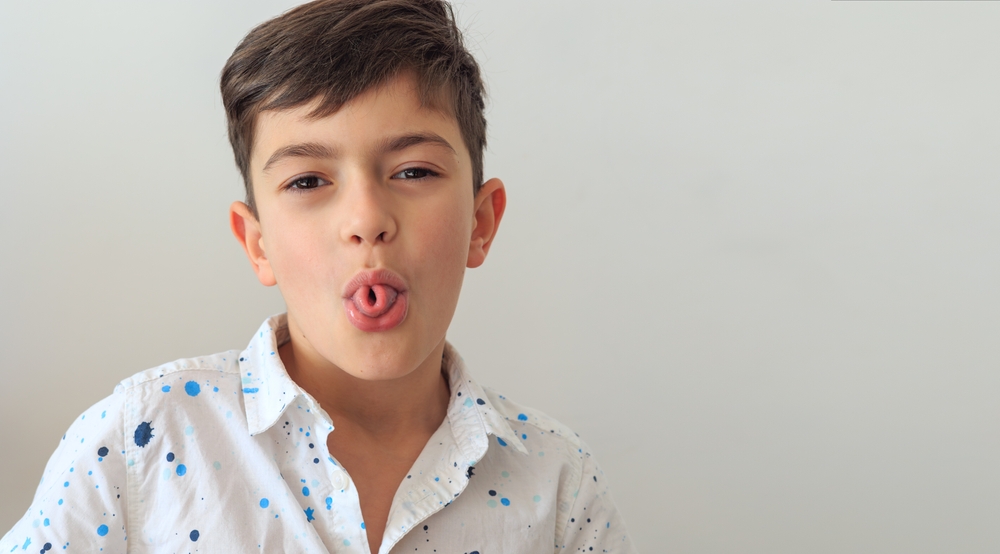Make an Appointment
This blog explores the role of augmentative and alternative communication (AAC) devices in supporting non-verbal and minimally verbal children, especially those with autism spectrum disorder (ASD).
Communication is connection, expression, and a foundation for learning. For non-verbal or minimally verbal children, especially those with autism, spoken language may not be the most accessible or effective way to express needs, thoughts, or emotions.
That’s where augmentative and alternative communication (AAC) comes in.
AAC includes a range of strategies, systems, and tools designed to help children understand and express themselves, from simple picture cards to high-tech speech-generating devices. With the right support, AAC empowers children to participate more fully in school, family life, and their community.
In this blog, we’ll explore the different types of AAC tools available for non-verbal children, how to match a device to your child’s needs, and how speech pathologists, occupational therapists, and NDIS supports work together to build communication success.

What Is a Common Communication Tool for Non-Verbal Individuals With ASD?
One of the most widely used and evidence-based communication tools for non-verbal children with autism is the Picture Exchange Communication System (PECS).
What is PECS?
PECS is a low-tech AAC system that uses picture cards or symbols. A child learns to hand over a picture to request an item or activity (e.g. a picture of an apple to request a snack). Over time, they learn to build sentences, answer questions, and engage in back-and-forth exchanges using visual symbols.
PECS was originally developed for children with autism who had no functional speech, but it is now used for a wide range of developmental and communication conditions.
Why is PECS so effective?
- Supports children with strong visual processing skills
- Reduces frustration by offering clear ways to request and express
- Can be used at home, school, or in therapy
- Portable and adaptable to a child’s environment
- Encourages interaction, not just repetition or naming
Pyramid Educational Consultants – What Is PECS?
PECS is often used as a stepping stone, some children transition to high-tech AAC or spoken language over time, while others continue using it long term as their primary mode of communication.

Which Assistive Device Is Specifically Designed to Support Non-Verbal Children in Communication?
For many non-verbal children, especially those with ASD, the most effective communication tool is a speech-generating device (SGD), also known as a voice output communication aid (VOCA).
What are speech-generating devices?
SGDs are electronic devices that allow a child to select symbols, words, or letters on a screen. When the child touches a symbol, the device "speaks" the associated word or phrase aloud. These devices come in various forms:
- Tablet-based apps (e.g. Proloquo2Go, LAMP Words for Life, TouchChat)
- Dedicated AAC devices (e.g. NovaChat, Accent, GridPad)
- Customised tablets with rugged cases, mounting systems, or switch access
Features that make SGDs powerful:
- Customisable vocabularies to match developmental level and interests
- Dynamic display (can grow from one word to full sentences)
- Symbol and text options for emerging readers
- Voice customisation (gender, tone, accent)
- Portability for use at school, home, or in the community
How are devices selected?
Choosing an SGD is never one-size-fits-all. A speech pathologist works with the child, family, and care team to determine:
- Motor and sensory needs (e.g. touchscreen vs switch access)
- Language level and learning profile
- Cognitive and attention abilities
- Preferred communication environments
- Goals for school, home, and social use
For NDIS participants, a formal assistive technology (AT) assessment is usually required to justify funding for the device, accessories, training, and support.

What Are the Tools for Non-Verbal Children?
AAC tools come in many forms, from simple visuals to complex software systems. These tools can be grouped into no-tech, low-tech, mid-tech, and high-tech categories.
1. No-Tech AAC
- Gestures and facial expressions
- Manual signing or key word signing (e.g. Makaton, Auslan signs)
- Body movements (e.g. pointing, head nodding)
Often the first form of AAC, especially for young children or those with motor planning challenges.
2. Low-Tech AAC
- Picture Exchange Communication System (PECS)
- Picture boards and visual schedules
- Choice boards and topic boards
- Communication books or flip charts
Low-cost and easy to implement, but may lack flexibility or dynamic vocabulary.
3. Mid-Tech AAC
- Single-message devices (e.g. BIGmack buttons)
- Multi-message speech buttons or talking tiles
- Battery-operated devices with limited programming
These are great for learning cause-and-effect and supporting specific routines or activities.
4. High-Tech AAC
- Tablet-based SGDs with voice output
- Custom devices with mounting, switch access, and dynamic software
- Apps like Proloquo2Go, TouchChat, Snap Core First, or Grid for iPad
High-tech AAC allows children to grow their language, build grammar, and participate across all settings.
Scope Australia – Communication Access Resources
AAC tools are often used in combination, a child may use visual schedules at school, a speech app for talking, and key word signing at home. Multimodal communication builds flexibility, comprehension, and confidence.

How to Communicate With Nonverbal Autistic Children?
Communication with a non-verbal autistic child goes beyond devices. It requires patience, consistency, and responsiveness.
Key strategies:
1. Follow the child’s lead
Notice what they’re interested in. Join them in play or sensory activities before introducing communication cues.
2. Use visual supports
Visuals reduce anxiety and support understanding. This includes visuals for routine, transitions, emotions, and choices.
3. Offer choices regularly
Instead of guessing, provide clear, limited options with visual or verbal prompts (e.g. “Do you want blocks or bubbles?”)
4. Respect all forms of communication
Eye gaze, gestures, signs, pulling your hand, these are all meaningful. Acknowledge and respond to build trust.
5. Model AAC use yourself
Use the child’s device or visual system to speak to them, this is called aided language stimulation and is key to learning.
6. Keep expectations realistic
Some children will become fluent AAC users. Others may use it to express basic needs. All progress is valuable.
7. Work with your therapy team
Speech pathologists, OTs, support workers, and educators can coordinate strategies, goals, and device use for consistent progress.
Raising Children Network – Supporting Nonverbal Children
AAC is not just about “replacing speech”, it’s about building meaningful, independent communication in whatever form the child can access.

Frequently Asked Questions (FAQs)
Is AAC only for children with autism?
No. AAC supports children with cerebral palsy, Down syndrome, genetic conditions, apraxia of speech, and more.
Can AAC prevent my child from learning to talk?
No. In fact, AAC often supports speech development. Children are more likely to attempt speech when they can express themselves confidently in other ways.
What age can a child start using AAC?
There’s no minimum age. Even toddlers can benefit from visual choices or simple apps with support from a speech pathologist.
Do I need NDIS to access AAC devices?
No, but NDIS can fund assessments, device trials, software, training, and support. Private health or early intervention programs may also help.
What if my child doesn’t like the device?
AAC success depends on matching the tool to the child’s strengths. Work with your team to trial options and adjust supports.

Final thoughts
Every child deserves the ability to connect, express, and be understood, regardless of how they communicate.
AAC tools empower non-verbal children to participate in daily life with confidence and clarity. Whether it’s a simple picture card or a dynamic speech app, the right device, matched with the right support, can be life-changing.
Next Steps
Call 1300 731 733 or book online for speech pathology or occupational therapy support tailored to your child’s communication needs.
You can also:
- Explore our Paediatric Allied Health Services
- Ask your NDIS coordinator about AAC assessments
- Book an assistive technology trial with your therapist
- Share this blog with your child’s care team or school
With speech pathologists, OTs, and family all working together, communication becomes not just possible, but powerful!

Date Published: Tuesday, July 1, 2025
Locate a Children's Speech Pathology
Service Near me
Get the experience & convinence you deserve to support your or a loved one's allied health needs.
Our Children's Speech Pathology team are currently serving & taking appointments in the following states and regions in Australia:
Need to get into direct contact with ur Client Services team? We're all ears. Call our team directly on 1300 731 733





